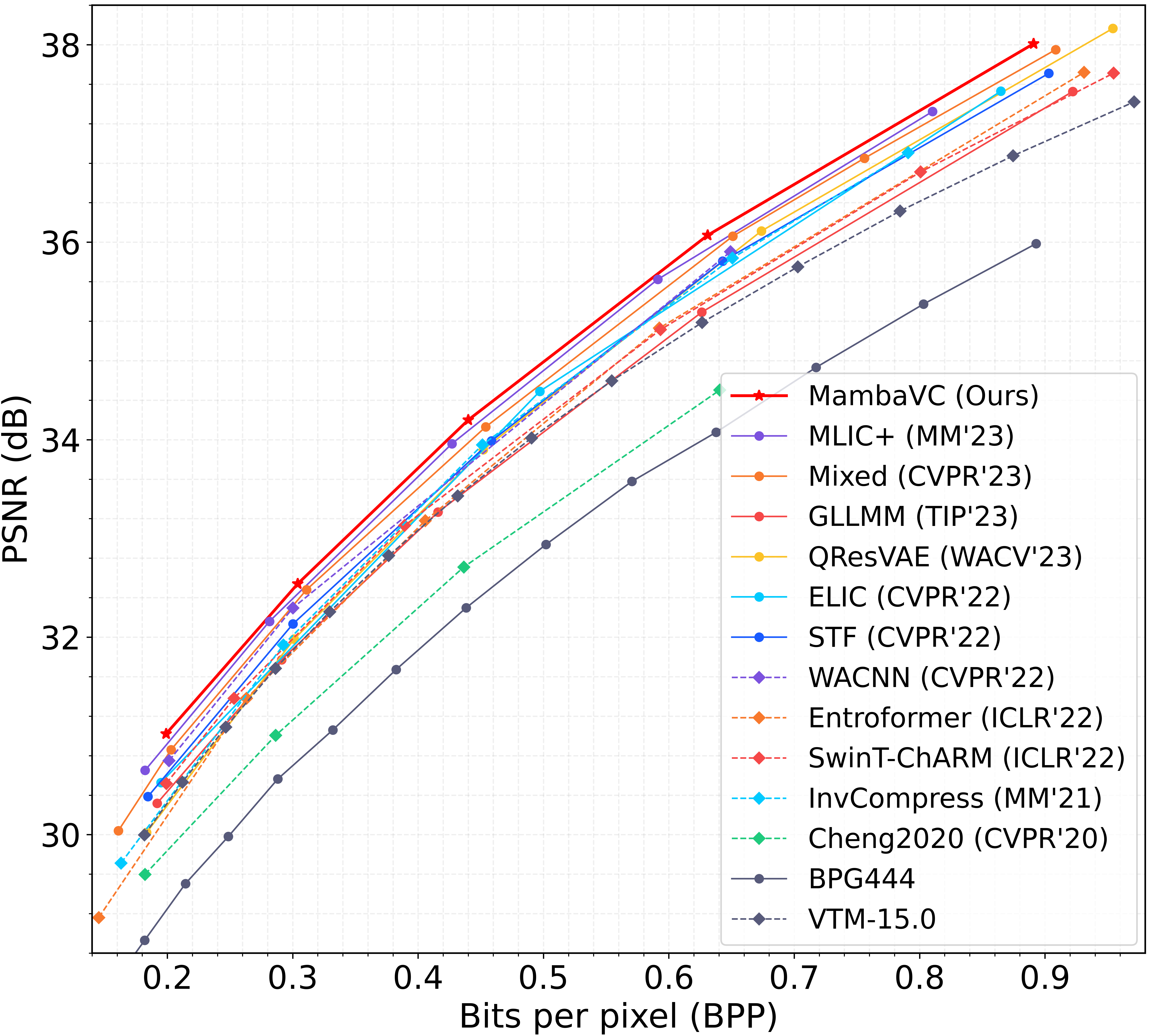This is the Pytorch repository of the paper "MambaVC: Learned Visual Compression with Selective State Spaces".
Please feel free to contact Shiyu Qin (qinsy23@mails.tsinghua.edu.cn) if you have any questions.
Learned visual compression is an important and active task in multimedia. Existing approaches have explored various CNN- and Transformer-based designs to model content distribution and eliminate redundancy, where balancing efficacy (i.e., rate-distortion trade-off) and efficiency remains a challenge. Recently, state-space models (SSMs) have shown promise due to their long-range modeling capacity and efficiency. Inspired by this, we take the first step to explore SSMs for visual compression. We introduce MambaVC, a simple, strong and efficient compression network based on SSM. MambaVC develops a visual state space (VSS) block with a 2D selective scanning (2DSS) module as the nonlinear activation function after each downsampling, which helps to capture informative global contexts and enhances compression. On compression benchmark datasets, MambaVC achieves superior rate-distortion performance with lower computational and memory overheads. Specifically, it outperforms CNN and Transformer variants by 9.3% and 15.6% on Kodak, respectively, while reducing computation by 42% and 24%, and saving 12% and 71% of memory. MambaVC shows even greater improvements with high-resolution images, highlighting its potential and scalability in real-world applications. We also provide a comprehensive comparison of different network designs, underscoring MambaVC's advantages.
The overall framework.
RD curves on Kodak (trained on flickr30k).
This codebase was tested with the following environment configurations. It may work with other versions.
- Ubuntu 20.04
- CUDA 12.2
- Python 3.8
- PyTorch 2.2.0 + cu121
From CompressAI:
git clone https://github.com/InterDigitalInc/CompressAI compressai
cd compressai
pip install -U pip && pip install -e .
From Vmamba:
git clone https://github.com/MzeroMiko/VMamba.git
cd VMamba
cd kernels/selective_scan && pip install .
The dataset directory is expected to be organized as below:
dataset_root/
- train/
- train_1.jpg
- train_2.jpg
- ...
- test/
- test_1.jpg
- test_2.jpg
- ...
CUDA_VISIBLE_DEVICES=0 python3 train.py --cuda -d <dataset_root> \
-n 128 --lambda 0.05 --epochs 500 --lr_epoch 450 490 --batch-size 8 \
--save_path <ckpt_to_path> --save \
--checkpoint <resumed_ckpt_path> --continue_train
CUDA_VISIBLE_DEVICES=0 python3 eval.py --cuda --data <dataset_root> --checkpoint <pretrained_ckpt_path>
We use calflops to calculate MACs, FLOPs, and model parameters.
@article{qin2024mambavc,
title={MambaVC: Learned Visual Compression with Selective State Spaces},
author={Qin, Shiyu and Wang, Jinpeng and Zhou, Yiming and Chen, Bin and Luo, Tianci and An, Baoyi and Dai, Tao and Xia, Shutao and Wang, Yaowei},
journal={arXiv preprint arXiv:2405.15413},
year={2024}
}
Our code is based on the implementation of CompressAI/Mamba/Vmamba. We thank the authors for open-sourcing their code.

